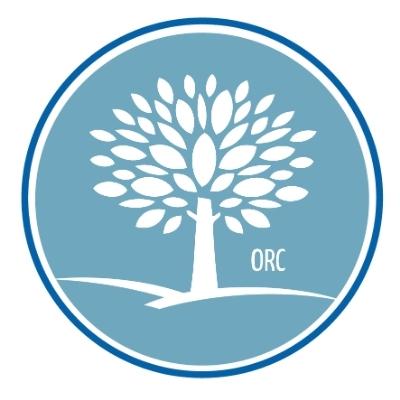What Do Heroin Eyes Look Like?
Written by The Orlando Recovery Center
& Medically Reviewed by Dr. Kevin Wandler, MD
Medically Reviewed
Up to Date
Last Updated - 06/19/2024
View our editorial policyKey Takeaways
- ‘Heroin eyes’ with pinpoint pupils, known as miosis, are a distinct sign of heroin use.
- Heroin use has been linked to a 400% increase in vision-threatening infections like endogenous endophthalmitis.
- Visual impairments from heroin use can range from blurred vision to blindness.
- Long-term effects of heroin on the eyes can include persistent pupil dilation, increased light sensitivity, and potential vision impairment.
- Permanent vision loss from heroin use is a significant risk, with conditions like glaucoma and corneal edema as possible outcomes.
- Recovery from heroin addiction can lead to improvements in eyesight, but the extent of recovery varies.
- Comprehensive eye care during recovery is crucial to address potential long-term effects on vision.
- Preventative measures and early detection are key in managing ocular complications from heroin misuse.
Initial Impact of Heroin on Ocular Health
Immediate Physical Ocular Changes Resulting from Heroin Use
Heroin, an illicit opioid, has a significant impact on various body systems, including ocular health. The introduction of heroin into the body, particularly through intravenous (IV) drug use, can lead to immediate, noticeable, and distinctive changes in the eyes. This is a direct manifestation of its profound impact on the central nervous system. Research has shown that the eyes are one of the first body parts to exhibit signs of heroin misuse or addiction.
The Condition Called ‘Heroin Eyes’
One of the hallmark signs of heroin use is the condition commonly referred to as ‘heroin eyes,’ characterized by small or pinpoint pupils, a condition known as miosis. This reaction is due to heroin’s activation of mu-opioid receptors in the brain, which influences the autonomic nervous system responsible for pupil size regulation.
Heroin’s Other Effects on the Eyes
In addition to miosis, individuals who use heroin may display bloodshot eyes, an out-of-focus or sleepy appearance, and puffiness under the eyes. These symptoms are often accompanied by other physical signs, such as sudden weight loss, needle marks, or scarring along veins. It is crucial to recognize these ocular changes promptly, as they signify substance use and may indicate potential eye infections or other serious health concerns. Understanding these signs can lead to early intervention and treatment, potentially mitigating further ocular and systemic damage.
Visual Impairments Linked to Heroin Use
Heroin use can lead to several visual impairments, affecting a person’s ability to see clearly and process visual information. Chronic heroin use has been associated with neurological disorders that can indirectly impact vision, such as toxic leukoencephalopathy and neurodegeneration. Studies have shown that substance use, including heroin, is directly implicated in the development of visual impairments. These impairments may manifest as blurred vision, light sensitivity, and, in severe cases, even blindness.
Heroin’s Link to Visual Impairment or Blindness
Research utilizing data from the National Survey of Drug Use and Health indicates a correlation between early lifetime substance use, including heroin, and the subsequent onset of self-reported visual impairment or blindness. The visual system, like other parts of the central nervous system, can suffer functional or structural damage due to the use of illegal drugs such as heroin, leading to various degrees of visual impairment.
Long-Term Ocular Effects of Heroin Use
Heroin use can lead to several long-term effects on the eyes that may result in permanent damage. Chronic heroin use has been associated with alterations in the brain’s white matter, which can impact the nervous system and potentially affect vision. Although specific studies on heroin’s direct impact on eye health are limited, the drug’s influence on the central nervous system suggests potential risks to ocular health.
Some documented long-term ocular effects include persistent mydriasis (dilated pupils), which can lead to increased sensitivity to light and potential vision impairment. The constriction of pupils, known as miosis, is also a common reaction to opioid use, and in the case of an overdose, it can indicate severe toxicity. Eye infections and abscesses may occur, especially if the drug is injected and hygiene is compromised.
Heroin’s Indirect Effects on the Eyes
Furthermore, heroin’s impact on overall health can indirectly affect the eyes. Users may experience nutritional deficiencies and a weakened immune system, both of which can contribute to eye diseases and compromised vision. The risk of contracting infectious diseases like HIV and hepatitis C through shared needles also poses a significant threat to overall and ocular health.
The Risk of Permanent Vision Loss from Heroin Use
Long-term heroin use poses significant risks to ocular health, including the potential for permanent vision loss. Heroin’s impact on the eyes can be severe, with various studies highlighting the risk of ocular complications. For instance, heroin-related ocular changes, such as corneal edema, can become irreversible if the drug use is not stopped promptly. The development of glaucoma is also a risk factor due to the interference with the outflow from the trabecular meshwork caused by substances in heroin.
Heroin and Infection: Endogenous Endophthalmitis
The rise of opioid-related health issues also includes a concerning increase in vision-threatening infections such as endogenous endophthalmitis. This severe infection can occur when bacteria or fungi from IV drug use enter the bloodstream, potentially leading to hospitalization and serious eye damage. The prevalence of such infections has risen dramatically, with a 400% increase reported between 2003 and 2016 among individuals with a history of IV drug use.
Other Ocular Complications Linked to Heroin Abuse
Long-term heroin use can lead to several serious eye conditions, other ocular issues that may arise from heroin use include age-related macular degeneration (ARMD), which is typically associated with aging but can be worsened by substance use. While ARMD primarily affects those over 50, chronic heroin use could potentially accelerate its onset. Furthermore, heroin misuse can also lead to a range of ocular manifestations, such as unusual ocular disorders linked to ‘designer’ drugs of abuse and devastating ophthalmic consequences from legal substances used improperly. Research highlights the varied and potentially severe impact of drug use on eye health.
The Necessity of Eye Exams in Recovery from Heroin
Preventative measures and early detection are critical in managing these conditions. For those in recovery, it is essential to undergo comprehensive eye examinations to assess the extent of any ocular damage and to receive appropriate treatment and care to potentially mitigate long-term visual impairments. For instance, ophthalmologists recommend protective strategies, such as wearing 100 percent UV-safe sunglasses, especially for individuals with increased photosensitivity. For those in recovery from heroin addiction, comprehensive eye care and monitoring are essential to address and potentially reverse damage caused by drug use. While some ocular conditions may be treated or managed, others could result in irreversible damage, underscoring the importance of early intervention and treatment for heroin addiction to prevent such outcomes.
Improving Eyesight After Heroin Use
The cessation of heroin use can lead to significant health improvements, including the potential for the recovery of eyesight affected by the substance. While heroin can cause various eye-related issues, such as pinpoint pupils and droopy eyes, recovery efforts focus on reversing the damage where possible. However, the extent of recovery can vary based on the duration and severity of heroin use, as well as the presence of any concurrent infections or conditions.
Healing from Discontinued Heroin Use
During recovery, the body begins to heal, and for some, this includes improvements in eye conditions developed as a result of heroin use. Retraining the brain to function without heroin is a critical part of recovery, which can also contribute to the normalization of eye functions. Although over-the-counter eye drops may temporarily alleviate symptoms like redness, professional treatment and rehabilitation are necessary for long-term recovery and eye health.
Tentative Recovery from Vision Impairment After Heroin Use
Chronic heroin use has also been linked to neurocognitive impairments and brain abnormalities, which may indirectly affect vision. However, the research does not provide conclusive evidence on the extent of reversibility of eye damage specifically caused by heroin use. Recovery from neurocognitive impairments, including those that may affect vision, has been observed in some individuals following an overdose, with partial recovery noted in others over a period ranging from three days to one year.
It is crucial to note that while some individuals may experience partial recovery from neurocognitive impairments and brain abnormalities after an overdose, the extent of recovery regarding vision loss is less clear. The permanence of vision damage due to heroin use underscores the importance of early intervention and treatment for substance use disorders. By addressing heroin addiction, individuals may reduce the risk of lasting damage to their eyesight.
The Importance of Early Intervention and Treatment
The impact of heroin on the eyes can be profound, leading to conditions such as endophthalmitis, a severe eye infection that, if left untreated, can result in irreversible damage to the retina and vision loss. Treatment for such infections typically involves administering antibiotics, antifungal drugs, and sometimes steroids to reduce inflammation. While these treatments can effectively manage the infection, the extent to which they can reverse any vision loss depends on the severity and duration of the condition before intervention.
Given the potential for permanent damage, the focus should be on immediate and effective treatment of any eye infections or conditions resulting from heroin use. Moreover, comprehensive care during recovery from heroin addiction should include eye care to monitor and address any ongoing or emerging vision problems. While some damage may be irreversible, especially in cases of prolonged neglect, early detection and treatment are crucial for the best possible outcomes in preserving eye health and vision after heroin use.
Managing Eye Health During Heroin Recovery
Proper eye care is a crucial aspect of recovery for individuals overcoming heroin addiction. During recovery, patients may experience various eye health issues, some of which may be reversible with appropriate care and attention.
- Regular eye check-ups: It is essential to monitor for any signs of eye infections, such as endogenous endophthalmitis, which have been linked to intravenous drug use and can lead to vision-threatening conditions. Regular check-ups with an ophthalmologist are recommended to promptly address any emerging eye problems.
- A holistic approach to health: Adopting a holistic approach to health during recovery can also benefit eye health. Engaging in healthy behaviors, such as adequate hydration, proper nutrition, and avoiding substances that could further harm the eyes, is important.
- A regular routine and stress-relieving exercises: For those in recovery, it’s advisable to maintain a routine that supports overall well-being, including eye health. Activities like meditation may help reduce stress, which can positively impact vision.
- Recovery programs with eye care: Recovery programs that include comprehensive care, including eye care, are vital in supporting patients’ recovery journeys. Resources such as the Substance Abuse and Mental Health Services Administration (SAMHSA) provide valuable information on treatment and support services that can assist individuals in maintaining their eye health during recovery.
Furthermore, the use of opioids for pain management in ophthalmology should be approached with caution, considering the high risk of addiction. Alternatives to opioid medication should be explored to prevent relapse.
Evidence-Based Heroin Addiction Rehab
If you or a loved one struggles with drug or alcohol addiction, Orlando Recovery Center is here to help. Our physician-led, evidence-based rehab programs include medical detox, inpatient and outpatient rehab, and a full continuum of care in between. Our compassionate team will help you start life fresh with the tools, coping strategies and resources you need to succeed. Don’t wait — contact a Recovery Advocate today to see how we can help.
Authorship



